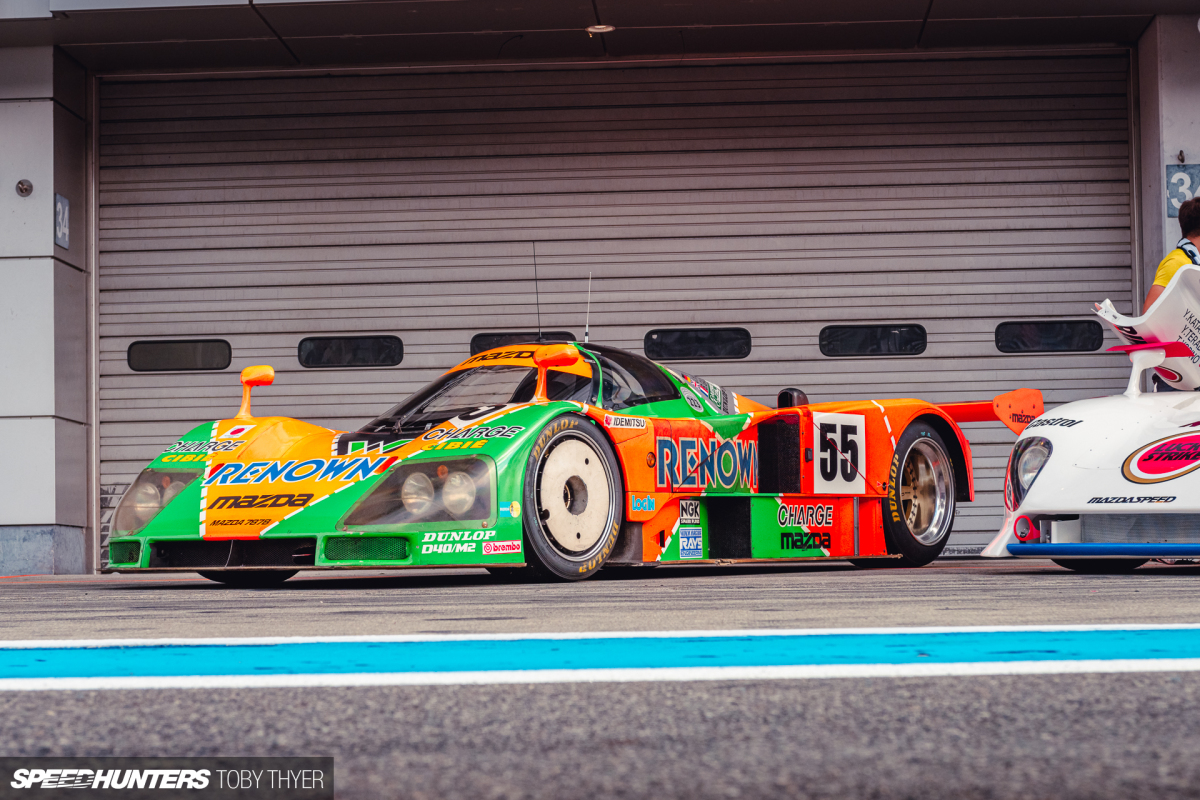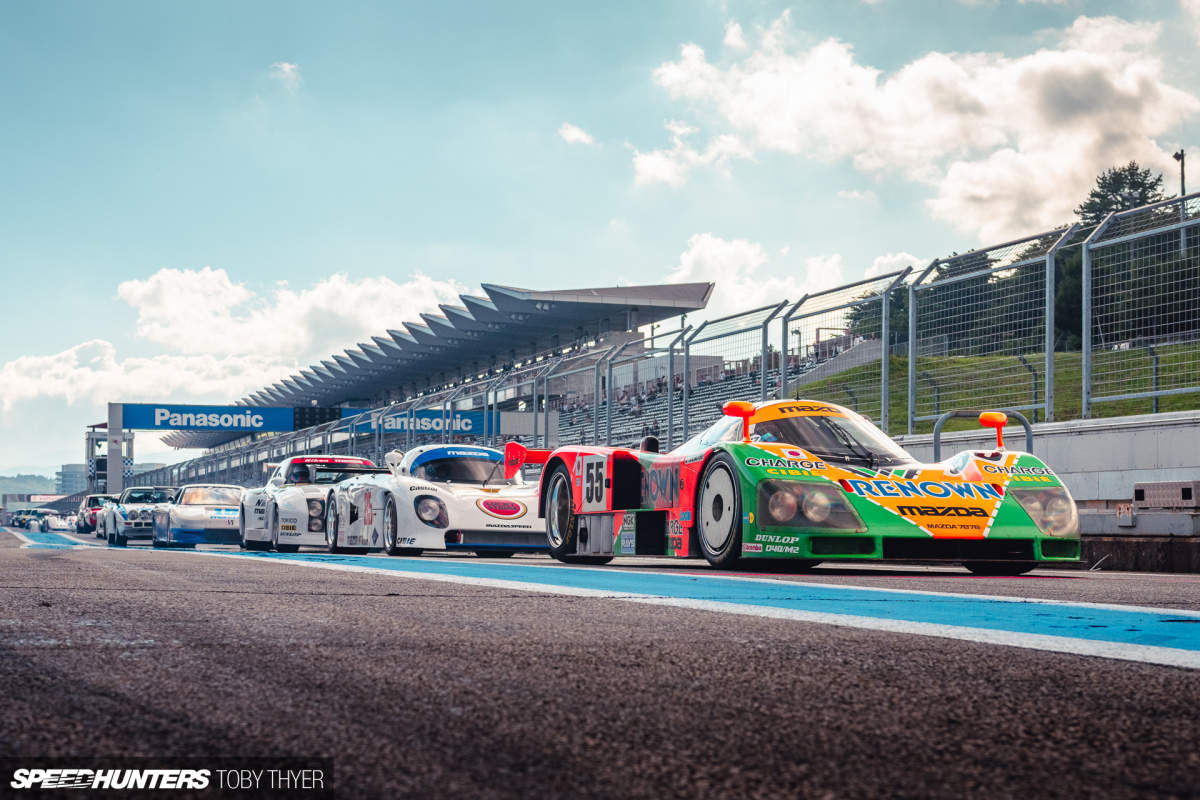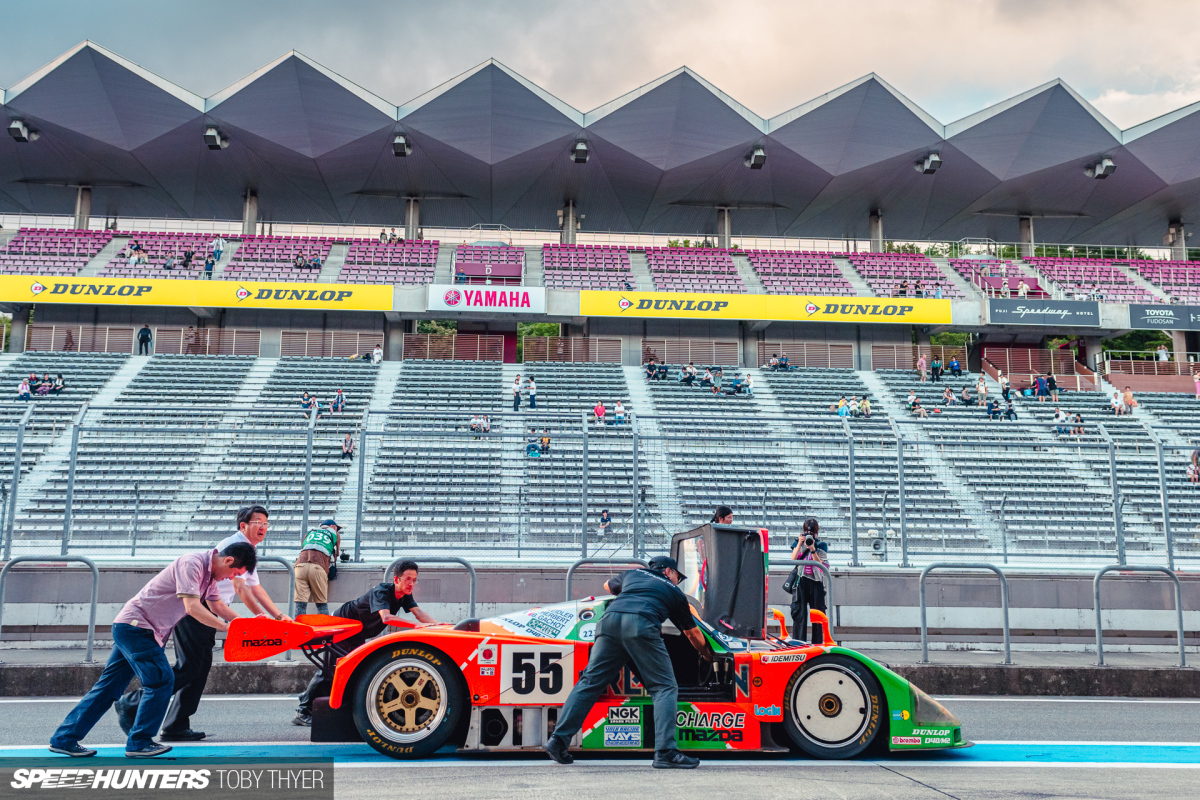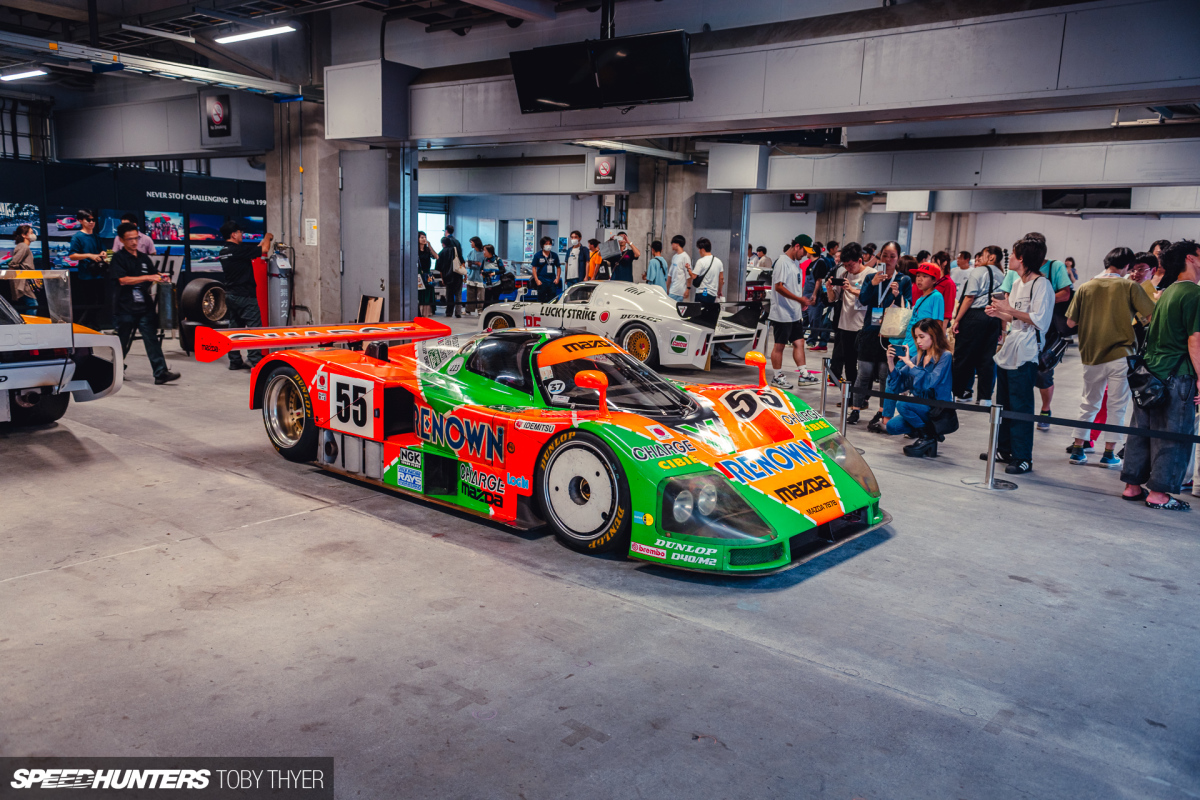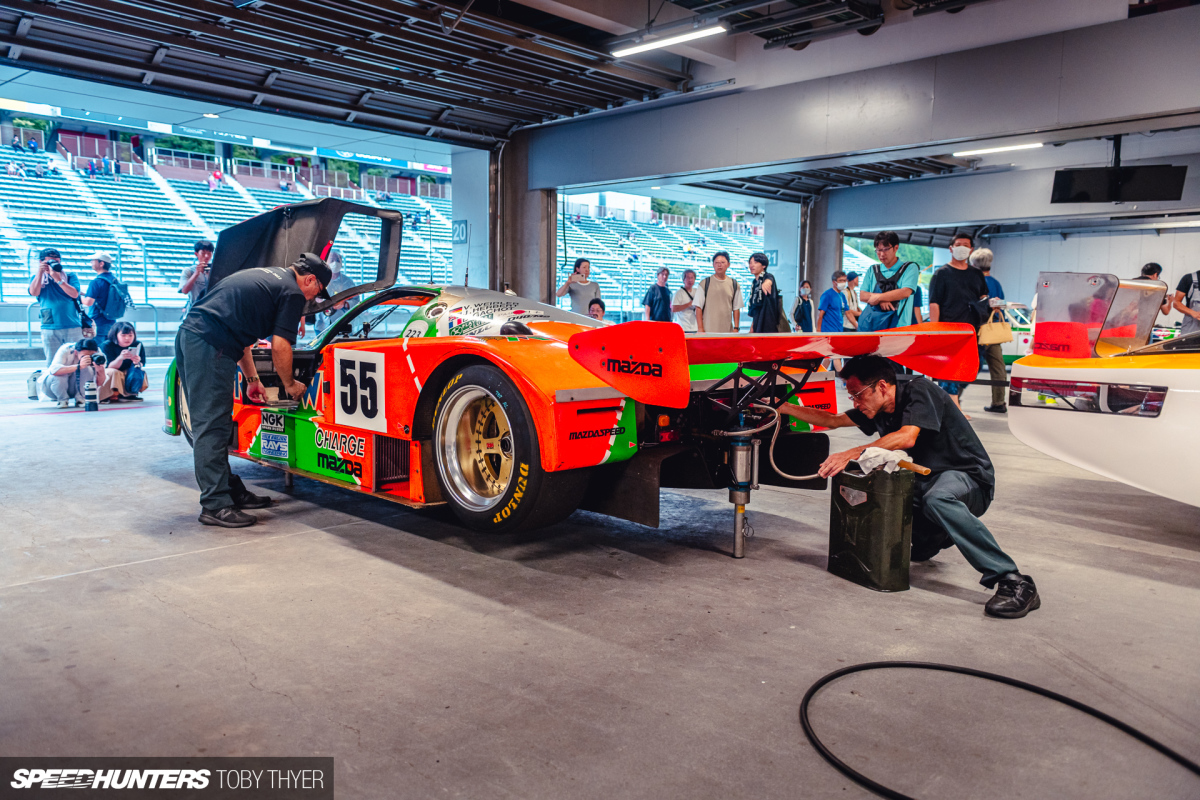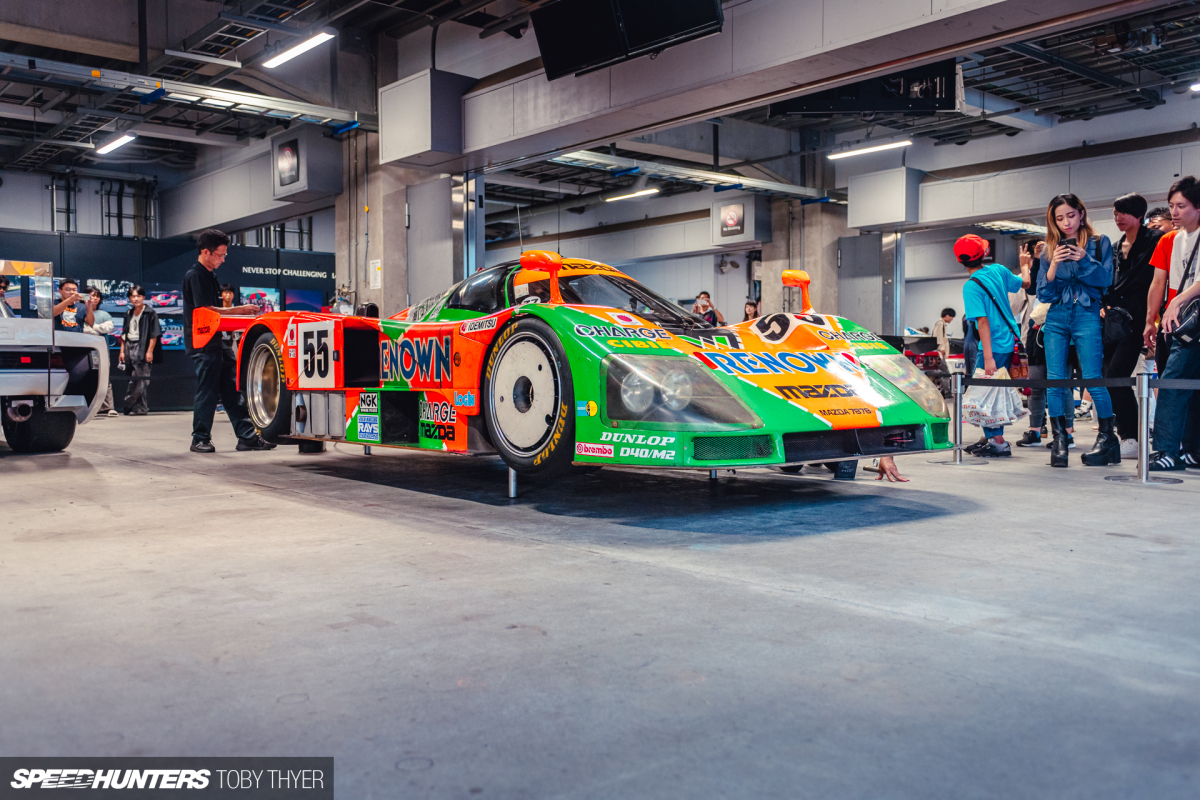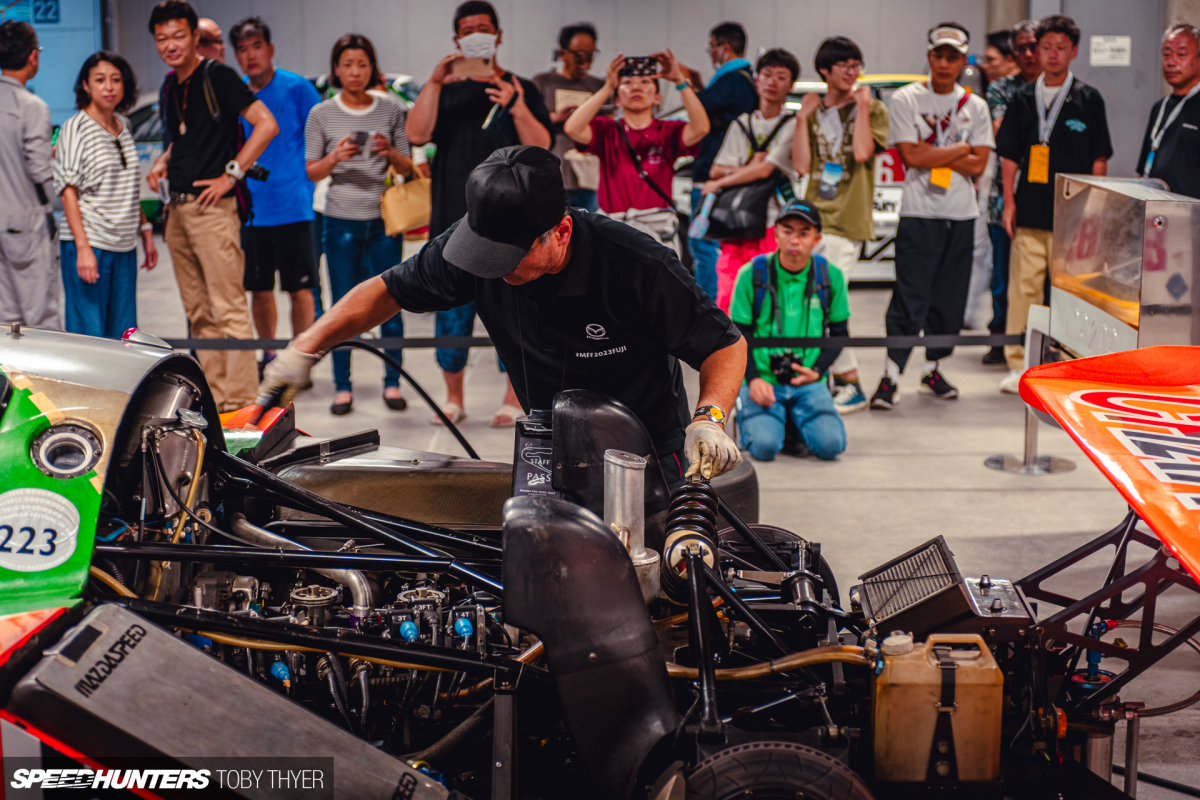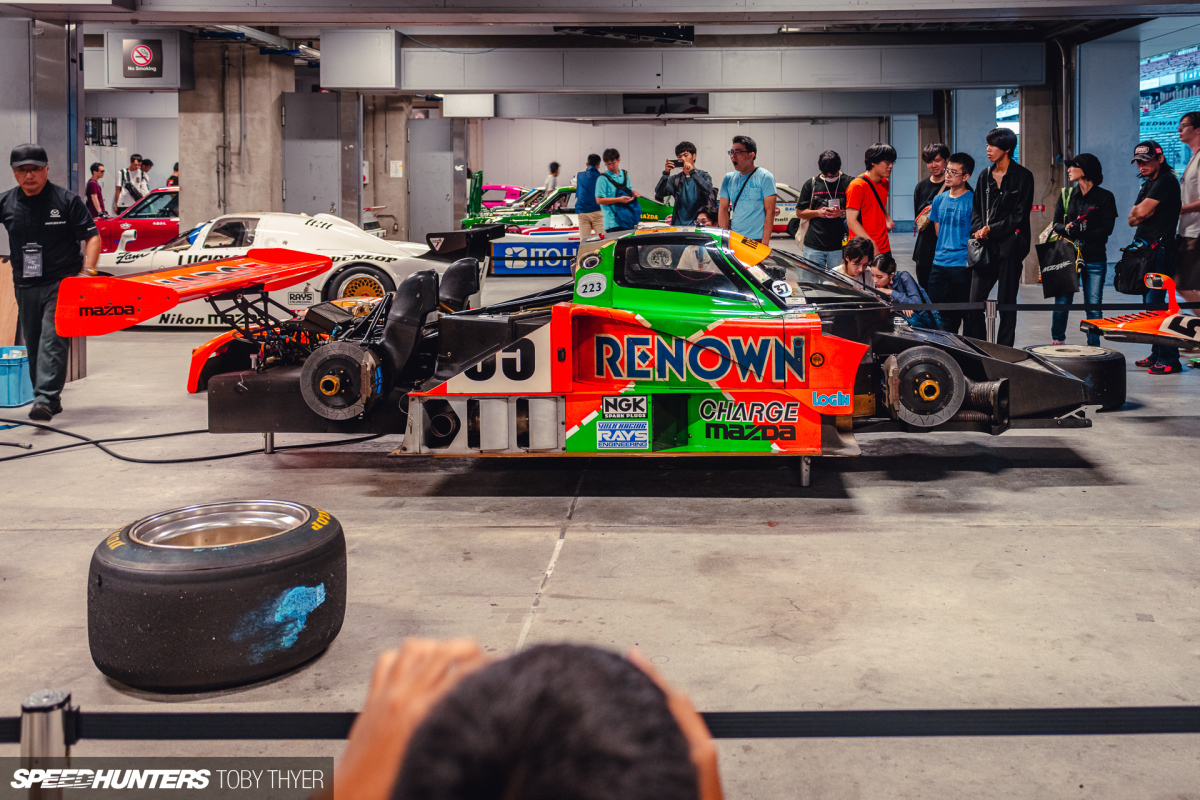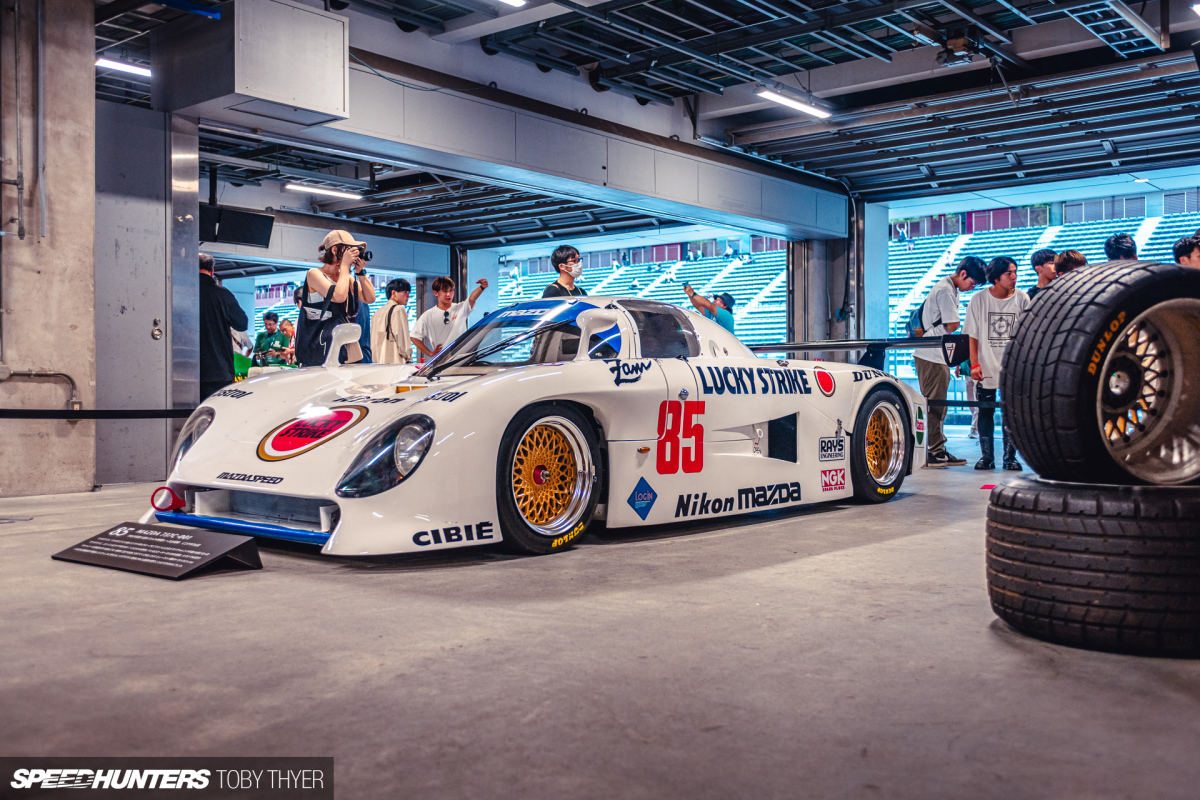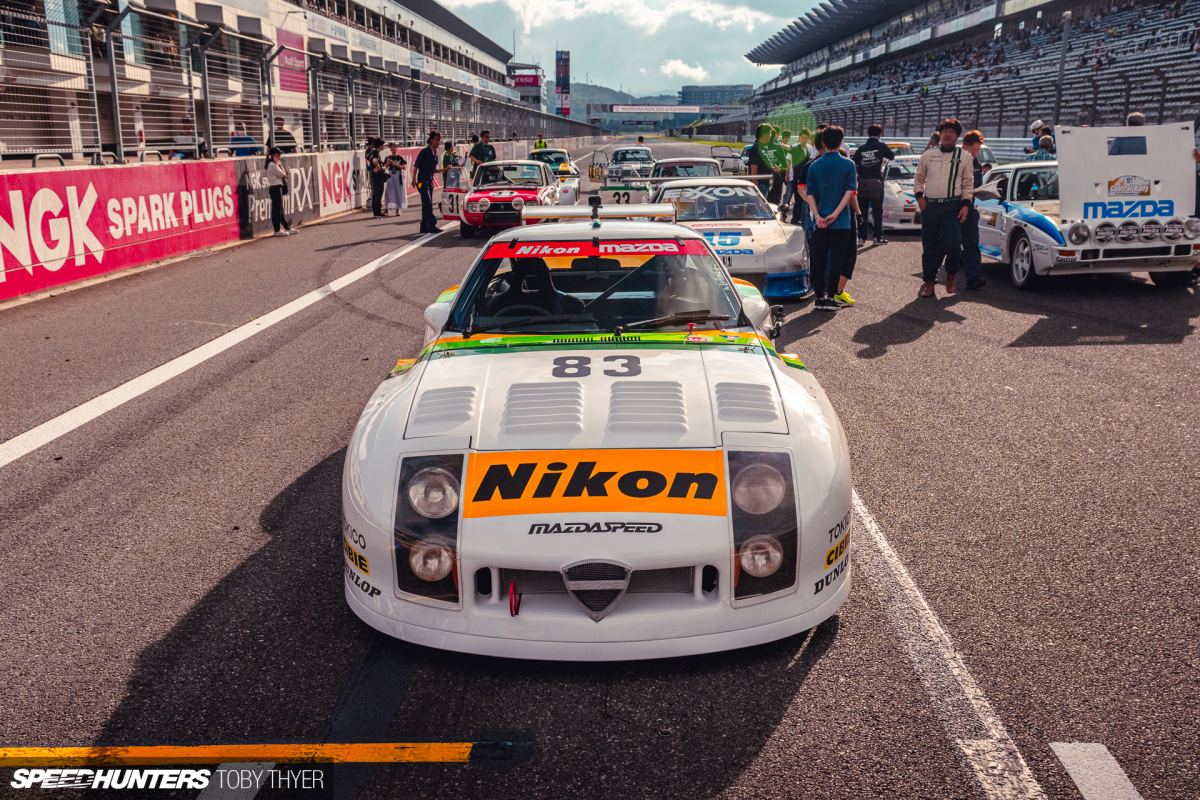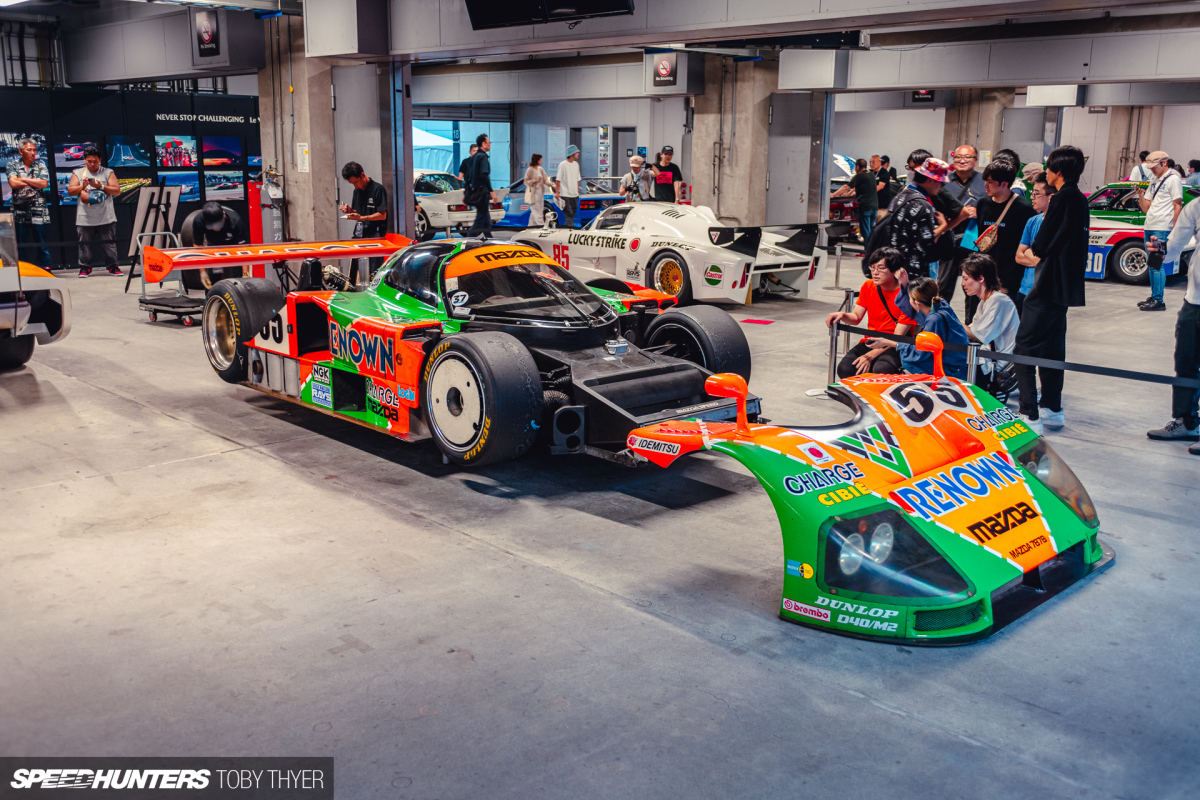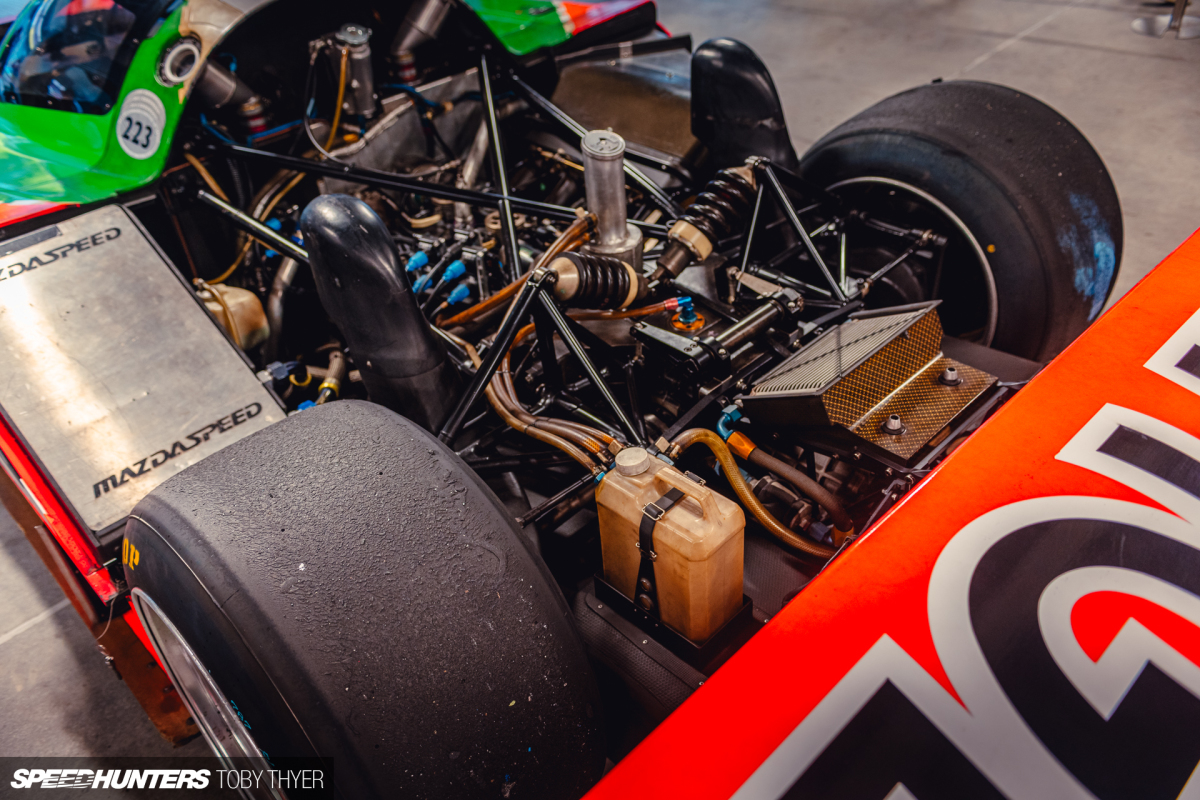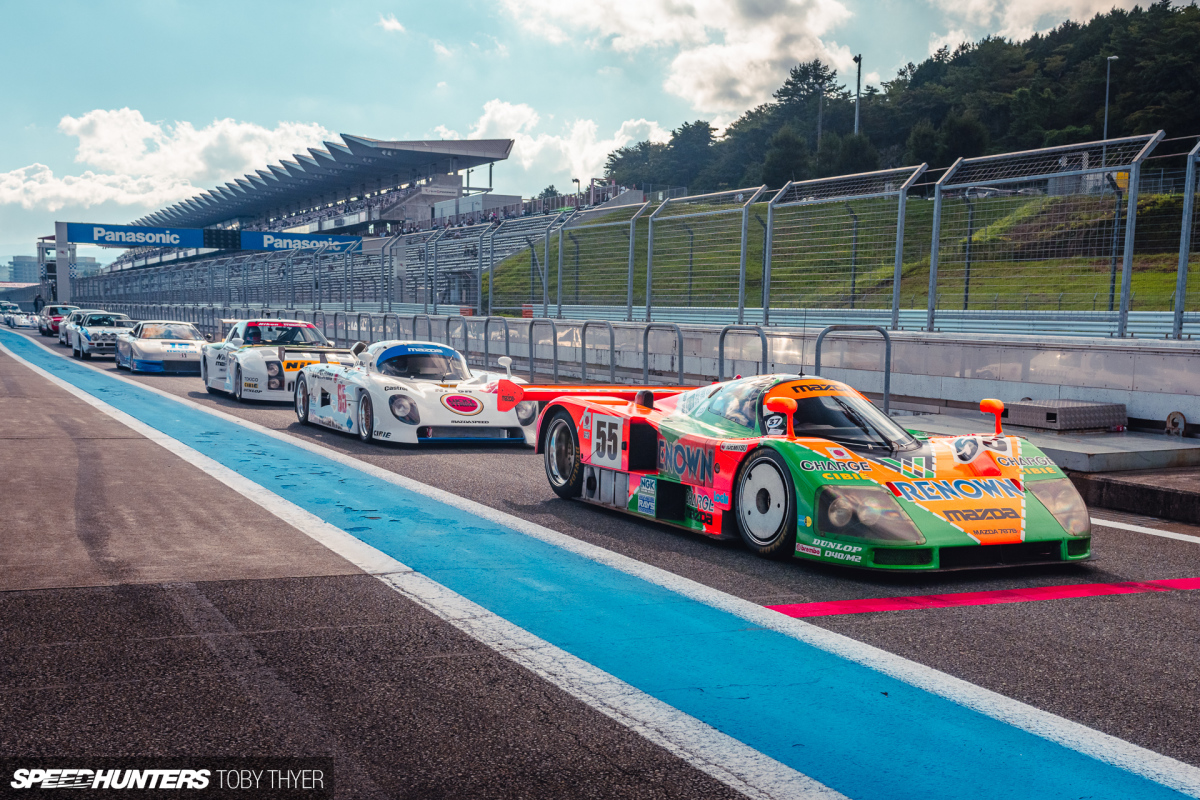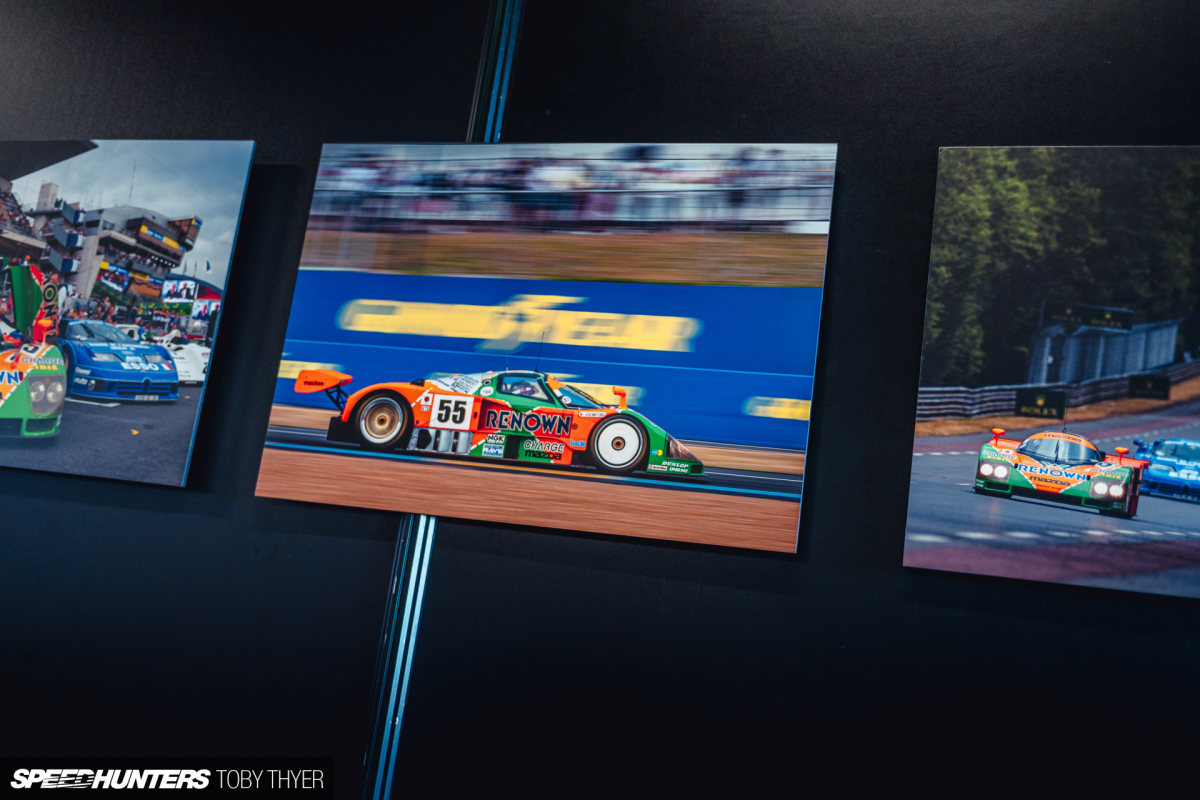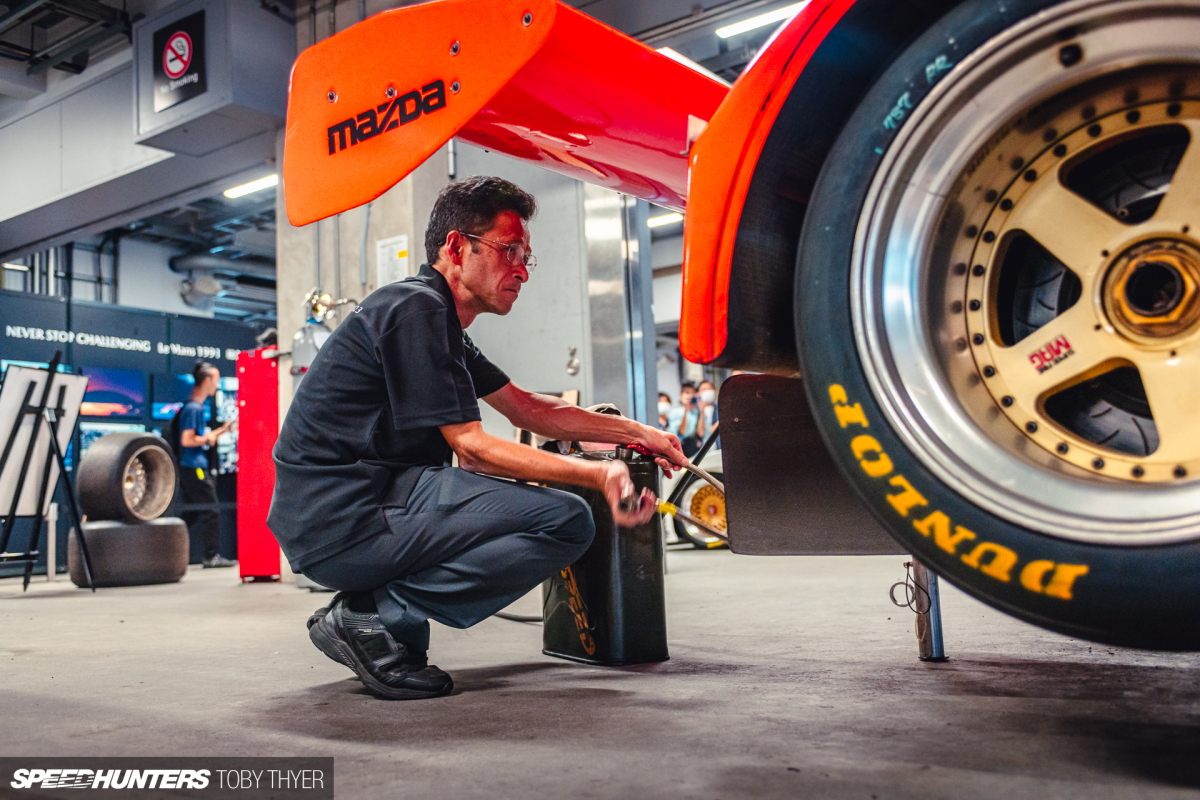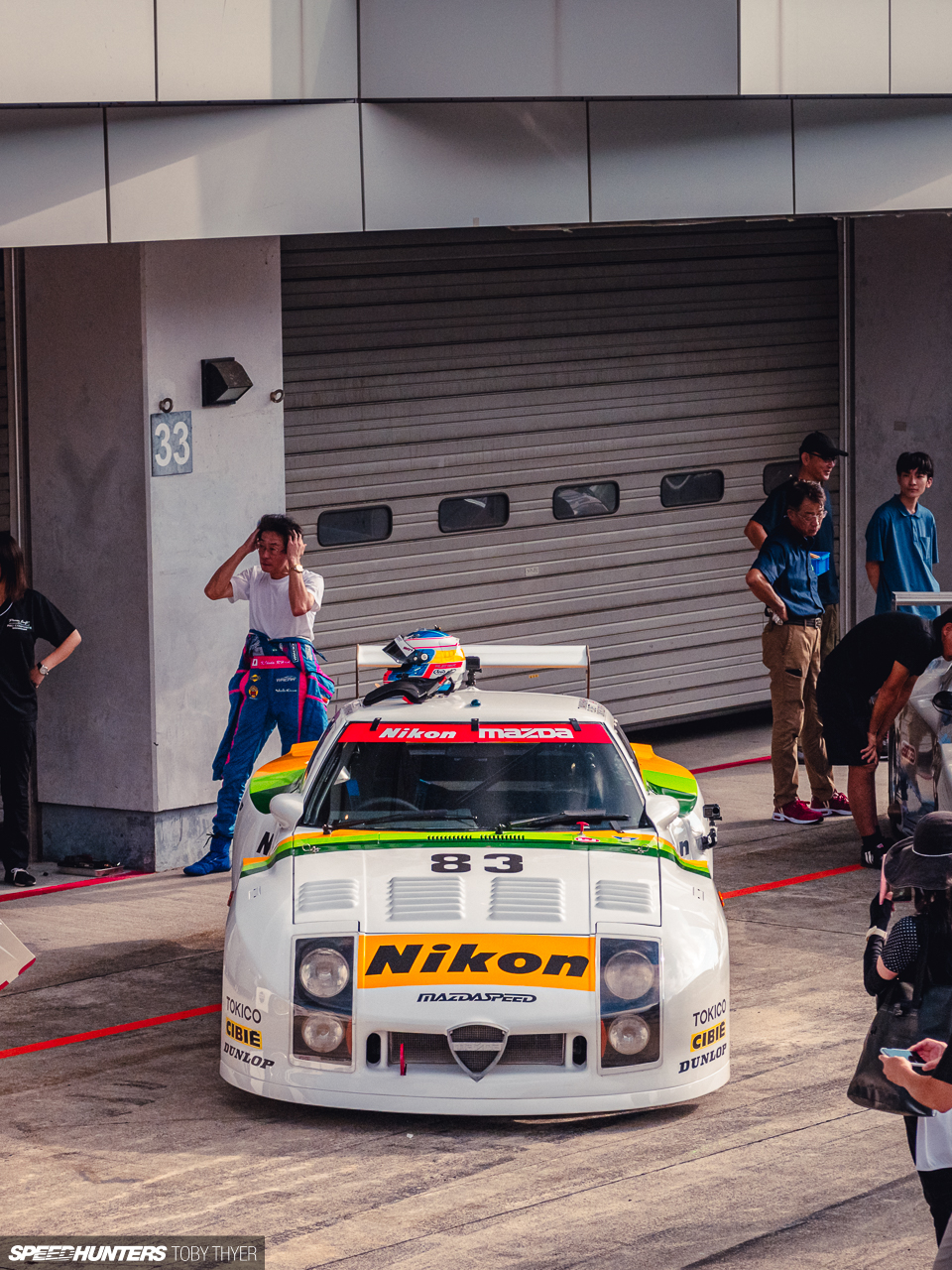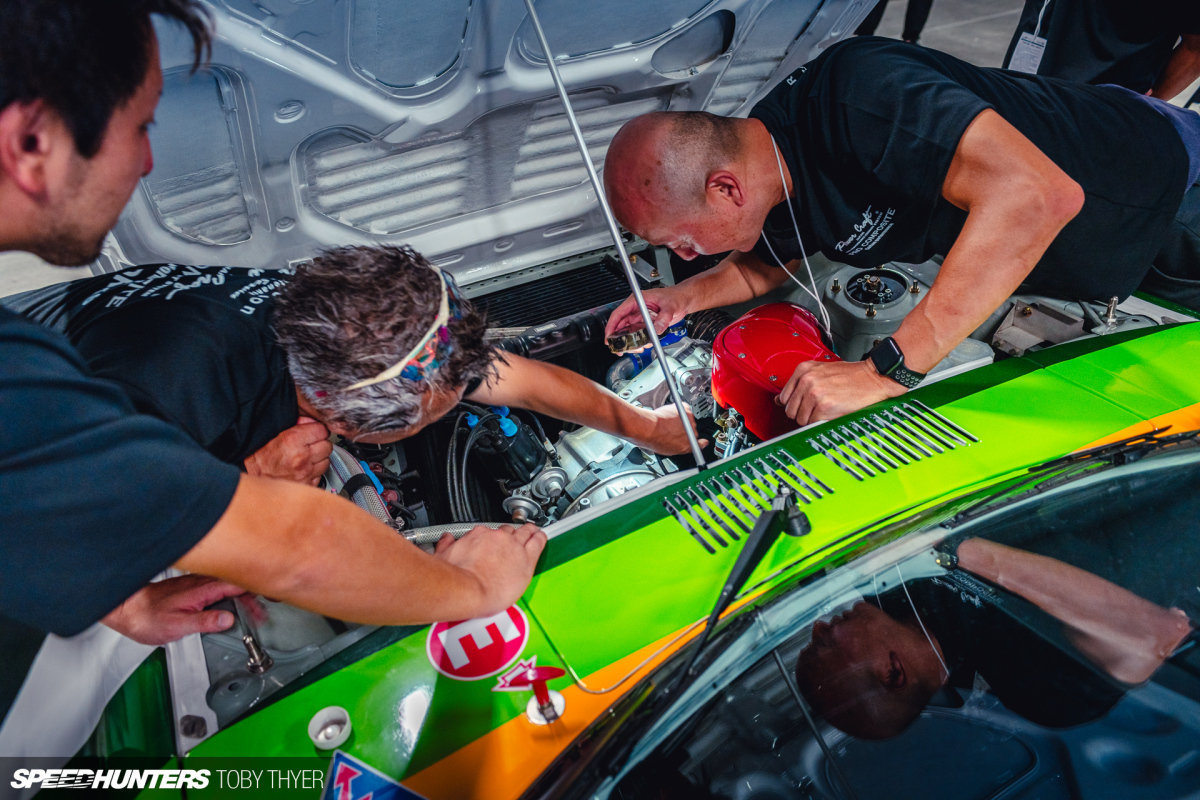‘One-in-a-100-years’ are pretty high odds, but that’s exactly how many times a rotary engine has won the greatest endurance race of all time, Le Mans.
Farmers talk about one-in-a-100-year weather as being the kind of storm, hurricane or flood that comes along just once a century. That’s kind of what the Mazda 787B is; it’s that bolt of lightning that hits once in a lifetime.
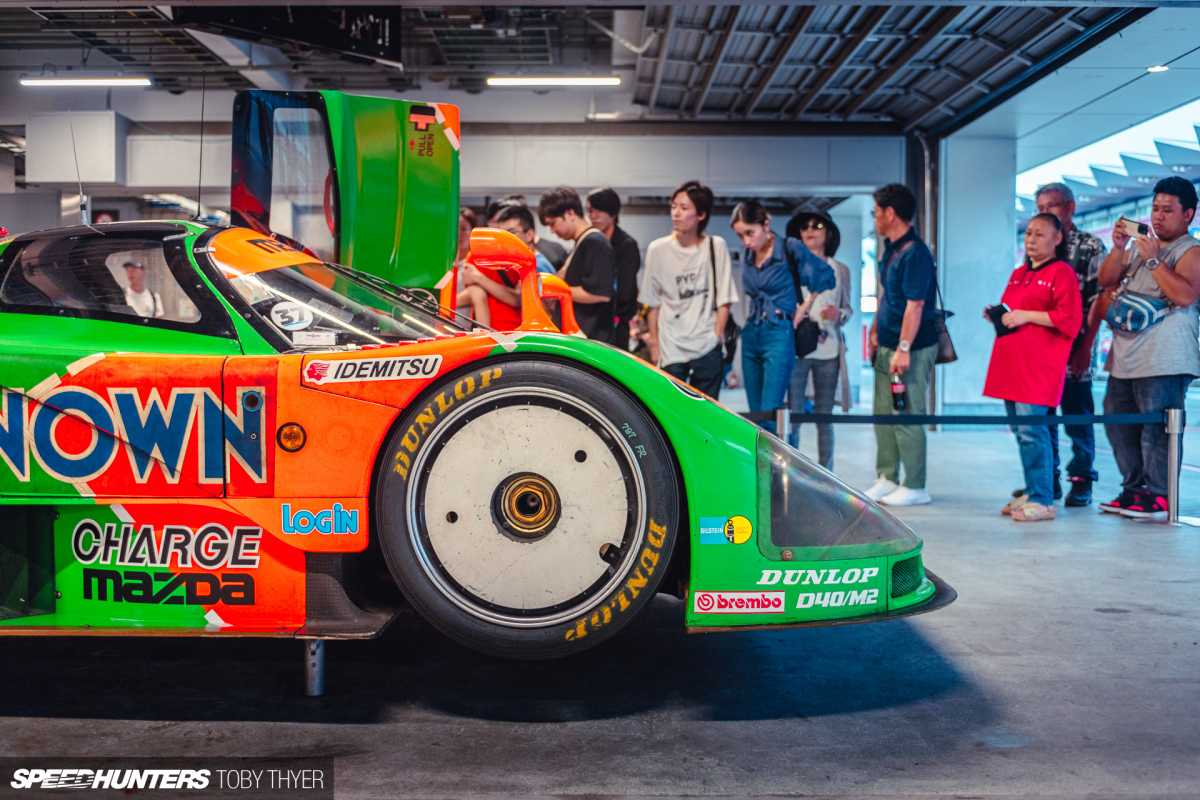
At the 2023 Mazda Fan Festa, I was lucky enough to not only see and – most importantly – hear the 787B running laps of Fuji Speedway, but also watch Mazda race engineers perform the 1991 Le Mans winner’s warm down checks like a top tier athlete after a marathon.
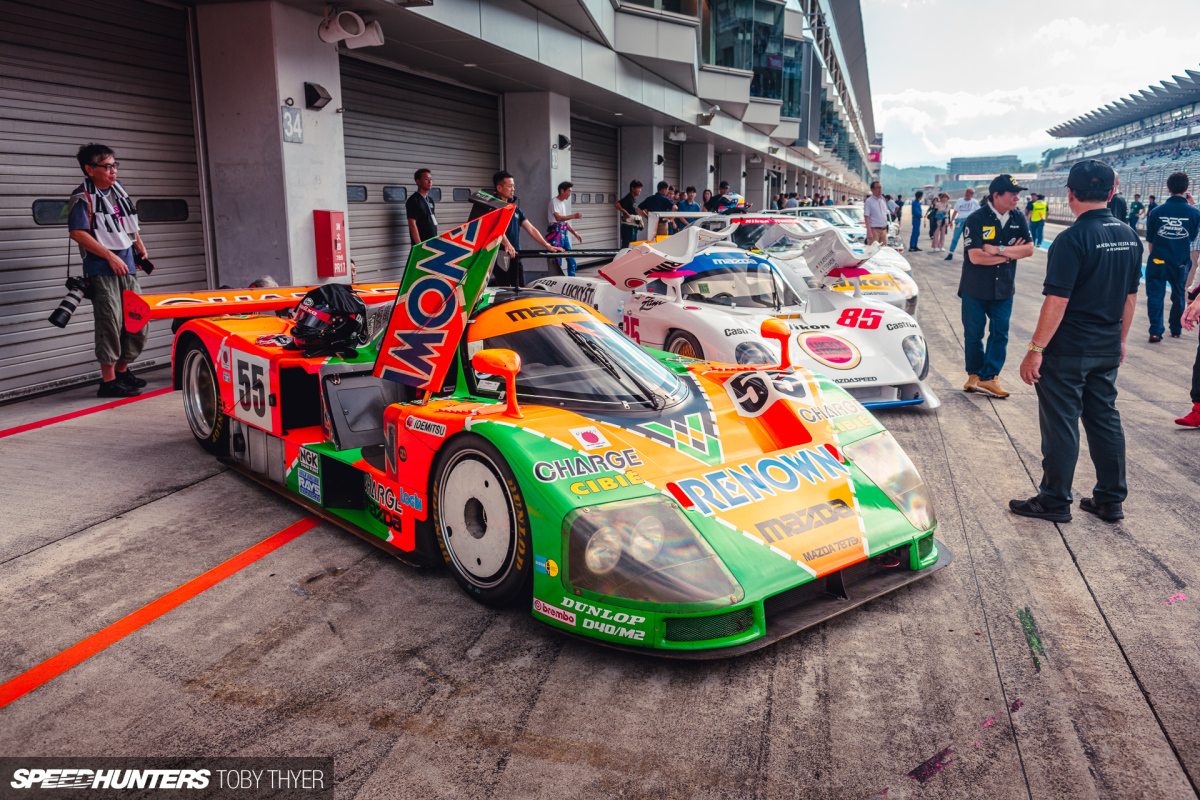
If you cast your minds back to last year, you might remember that I saw the spare body 787B replica at the Mazda Museum in Hiroshima. Even though I got to look over a 4-rotor R26B engine, the experience left me feeling a bit… cheated. So you can imagine my excitement when I learned that the 787B – car #55 – would be at the Fan Festa this year as part of the Le Mans centenary celebrations.
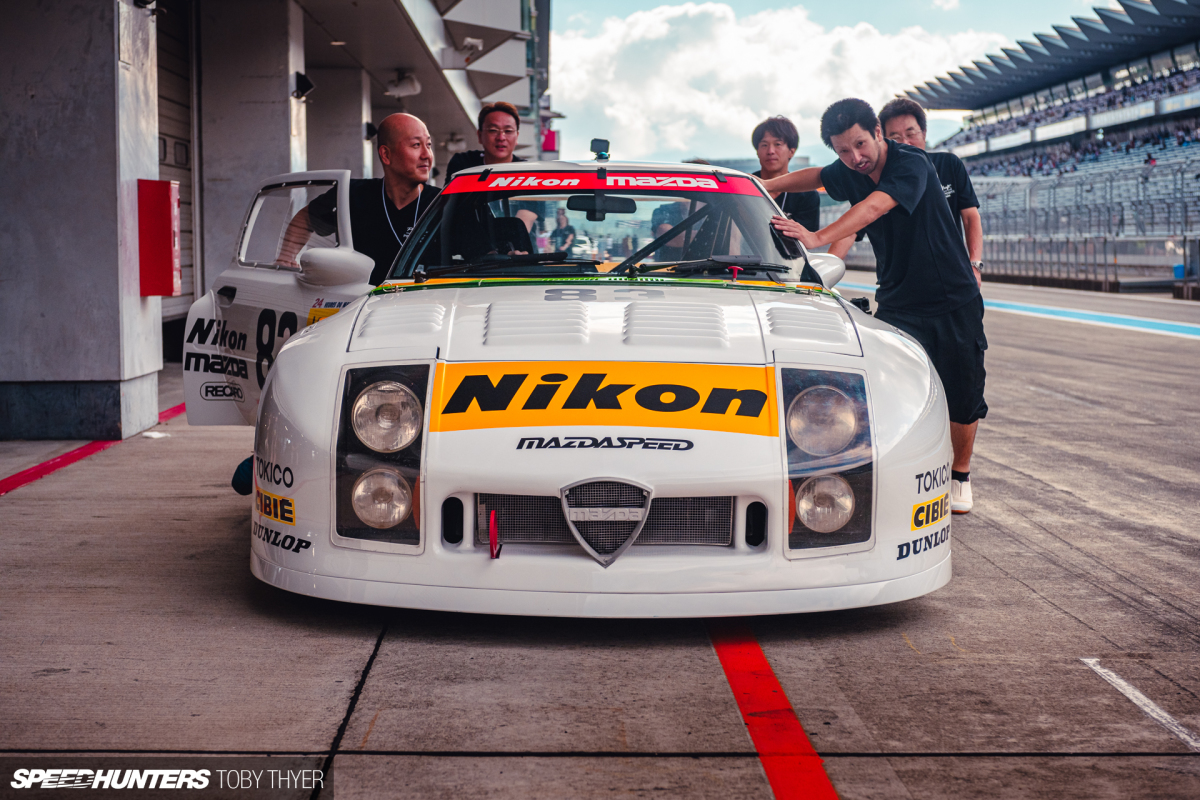
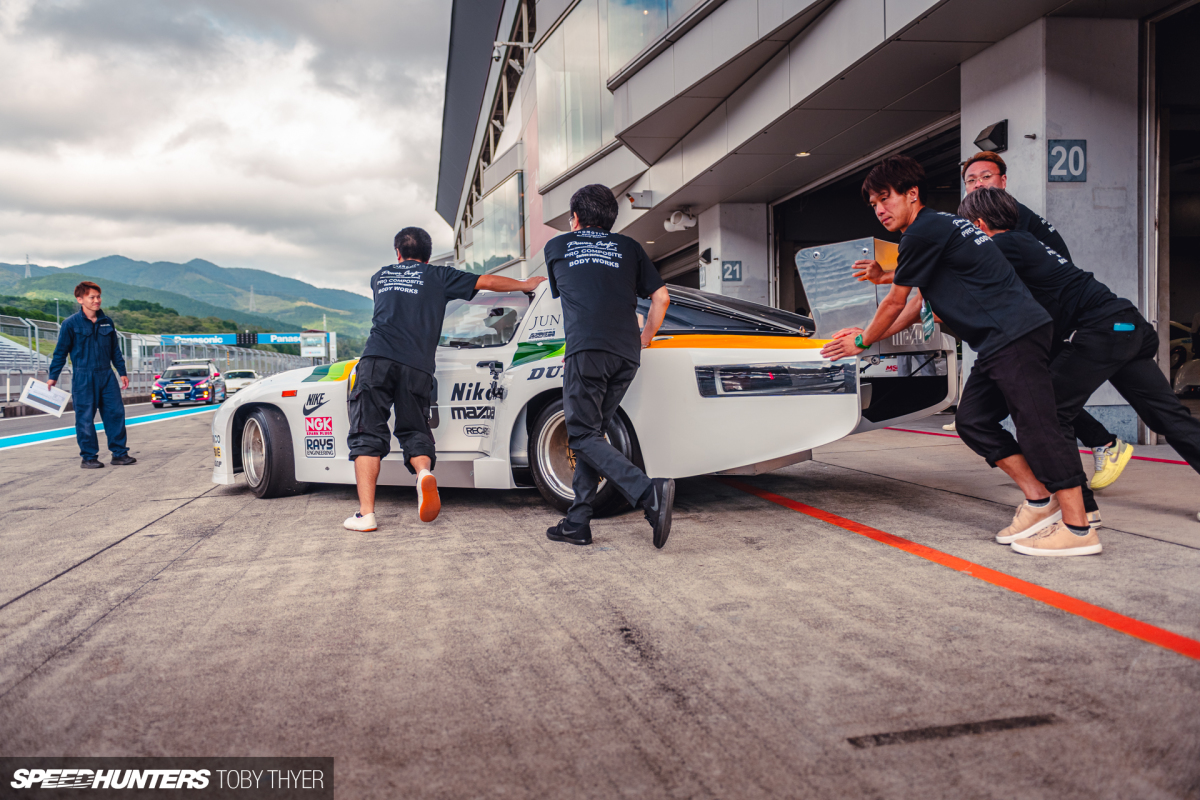
Of course, the 787B wasn’t the only rotary-powered car to ever enter Le Mans. Spectators were first treated to the buzz of a twin-rotor 10A in 1970, albeit powering a Chevron B16. Side note, that particular car made a brief appearance in the Steve McQueen film Le Mans.
The first Mazda-built, rotary-powered chassis to enter Le Mans was an RX-3 entered in 1975 by a French privateer team. In 1979, the first RX-7 was entered by a Japanese dealership, Mazda Auto Tokyo. The RX-7 struggled over the next few years, but in 1982 an IMSA GTX RX-7 Type 254i finished 14th overall.
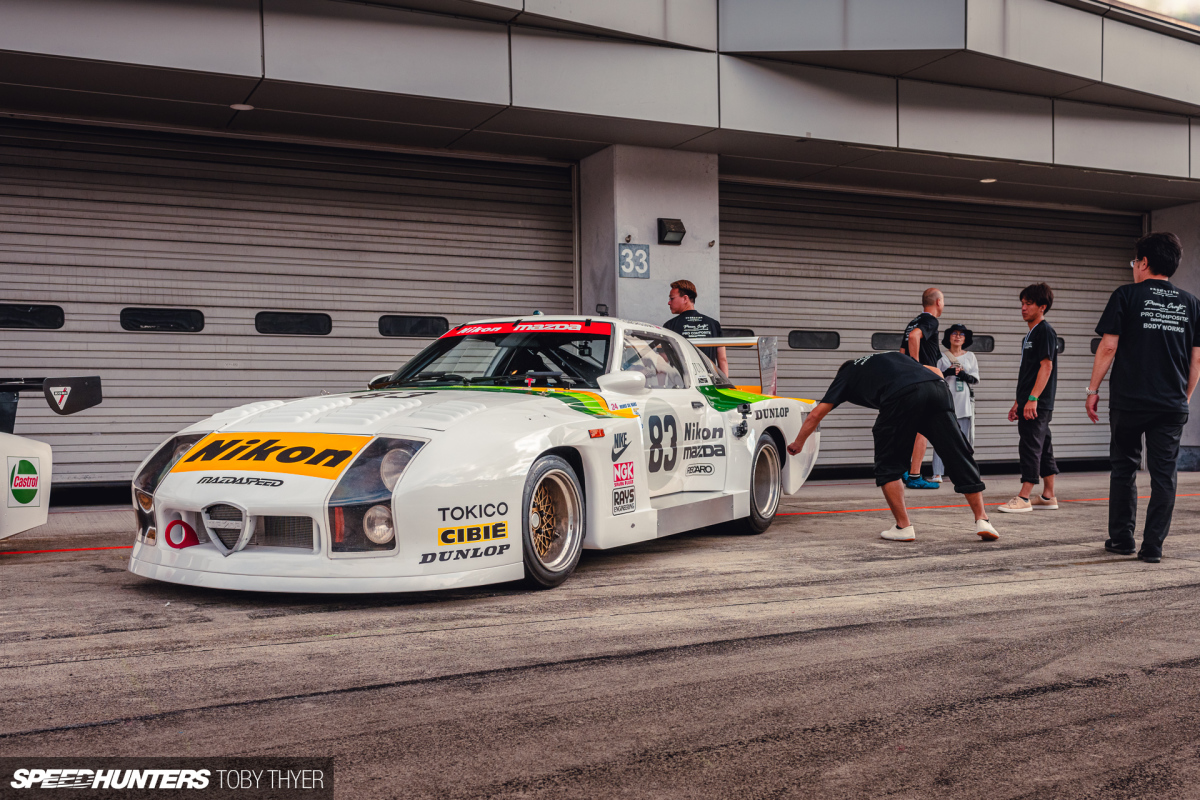
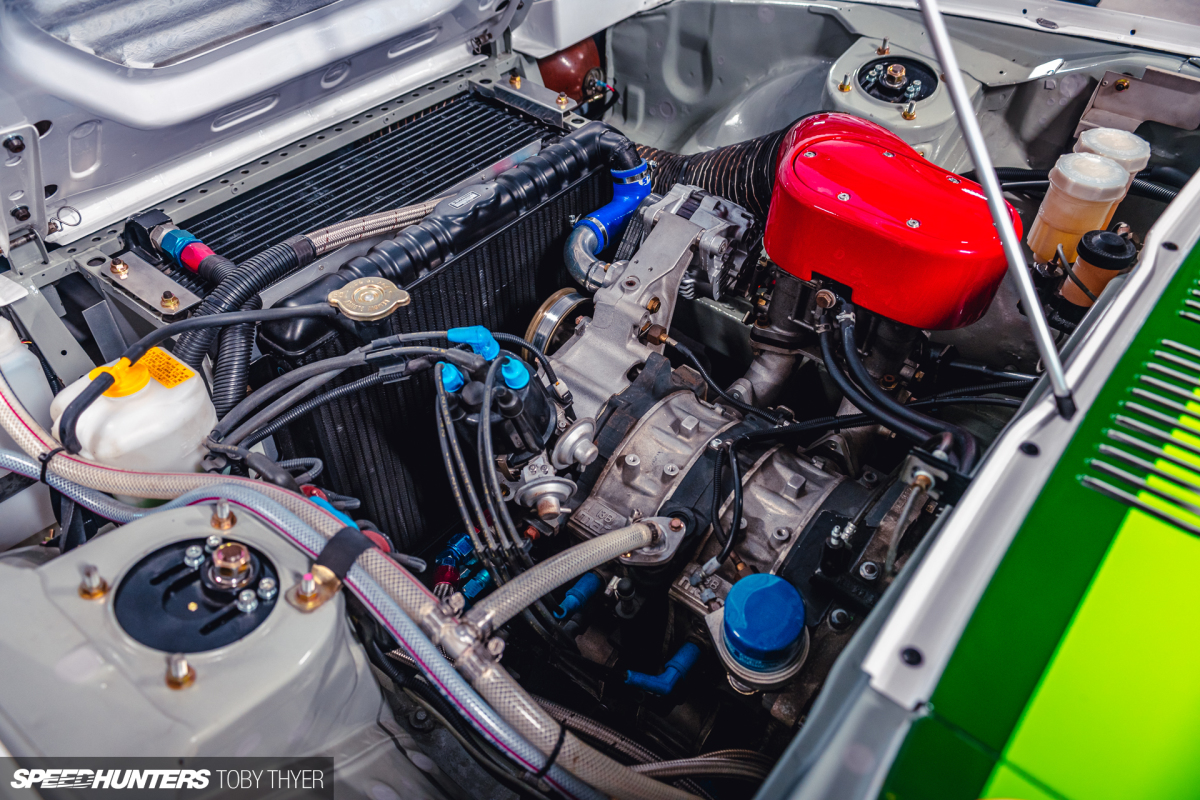
The 254i returned to Japan and was raced domestically in various liveries. The car then disappeared for a few decades, until it was acquired by Powercraft, a tuning shop based in Shizuoka, and rebuilt from the ground up.
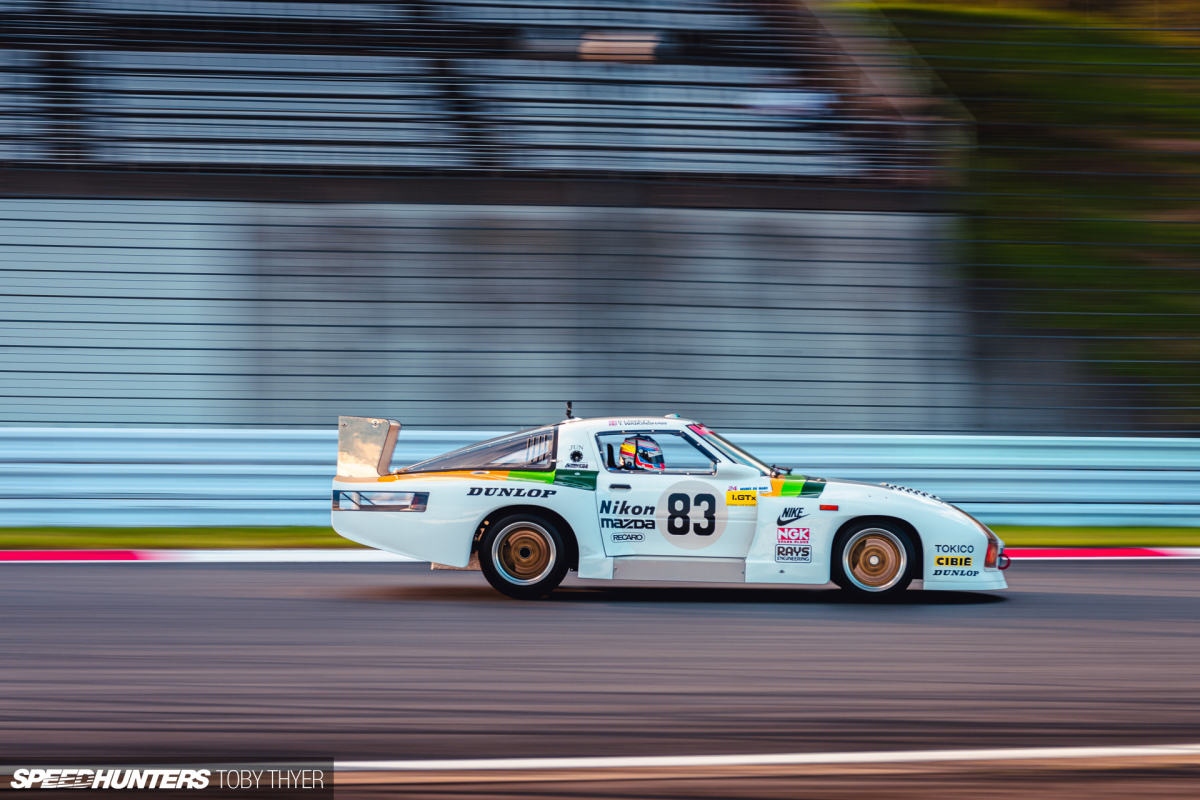
This was the last of the RX-7 chassis cars to compete at Le Mans. Ultimately, they had to give way to purpose-built racing machines if Mazda were ever to compete with the likes of Porsche or Jaguar.
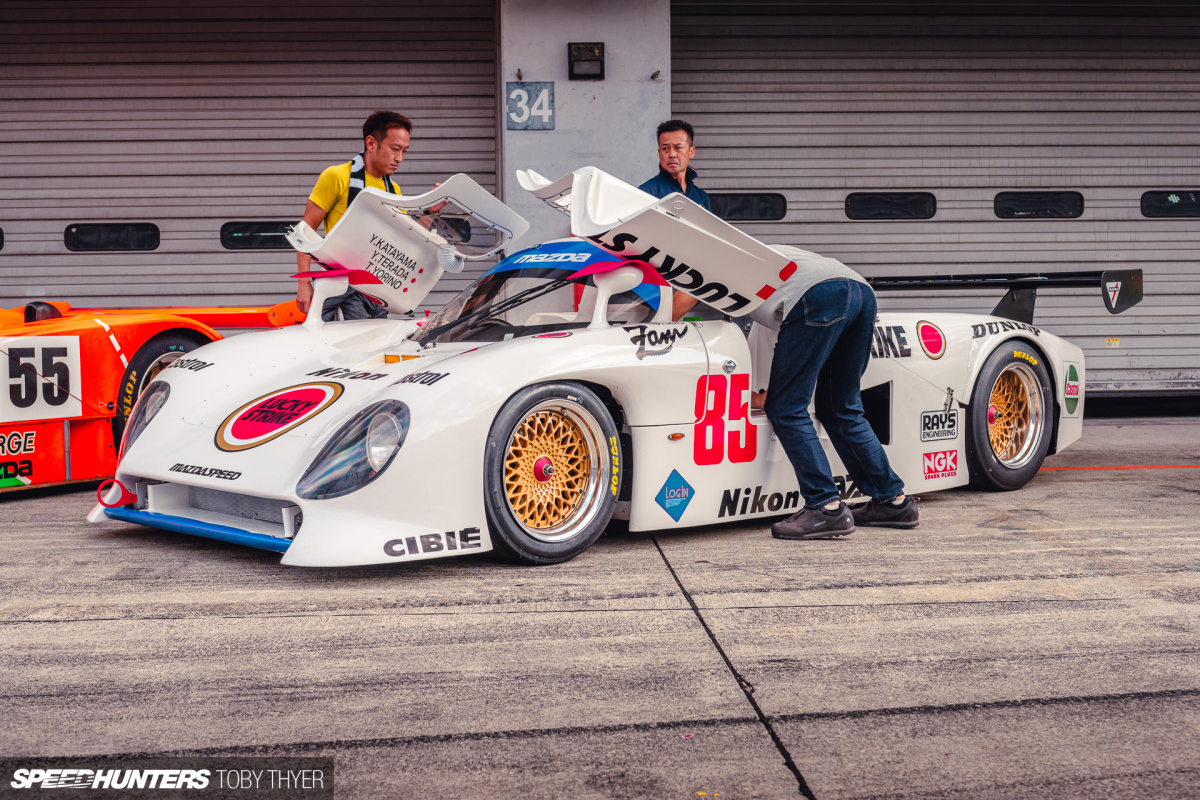
In 1983, the Mazdaspeed 717C won Le Mans’ Group C Junior category and finished 12th overall. 1985 saw the twin-rotor 737C, pictured here, take third place.
The 737 and preceding 717 were important cars in their own right. The latter was the first to use a twin-tube aluminium monocoque chassis, and the former was the last car to use the 13B engine. Both cars laid foundations for future victories.
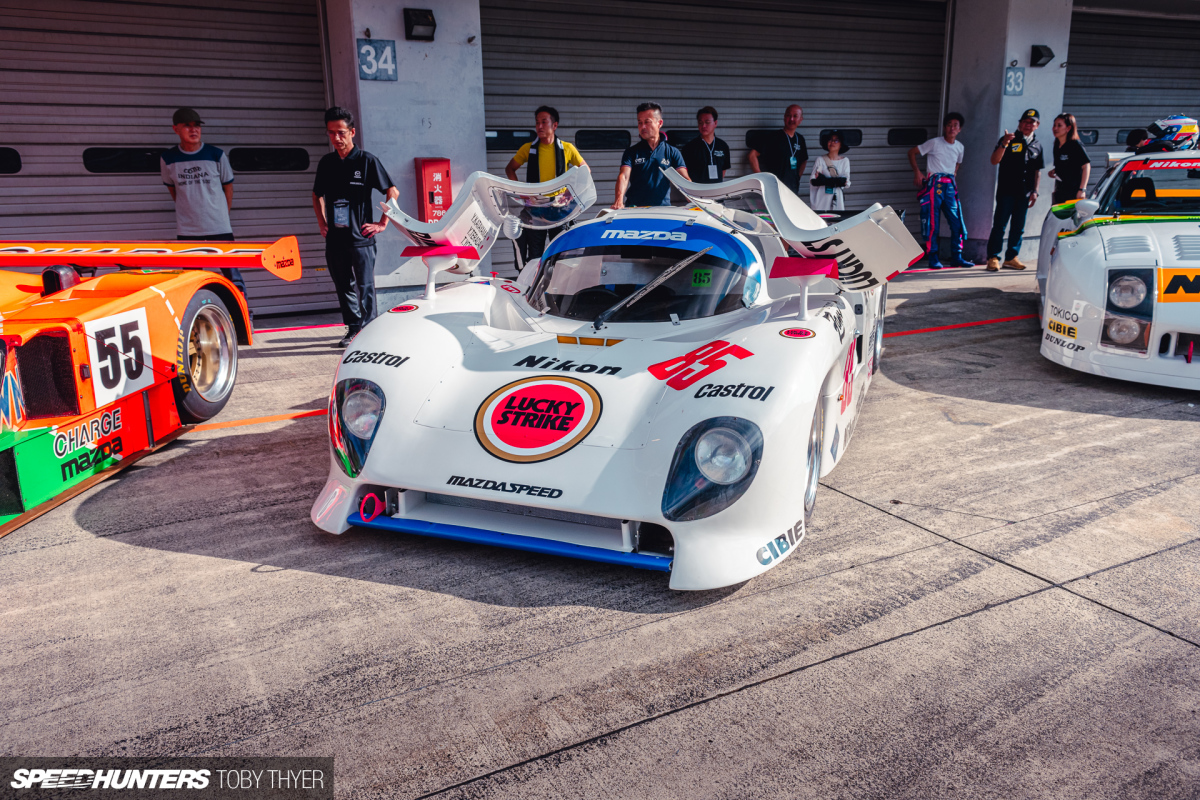
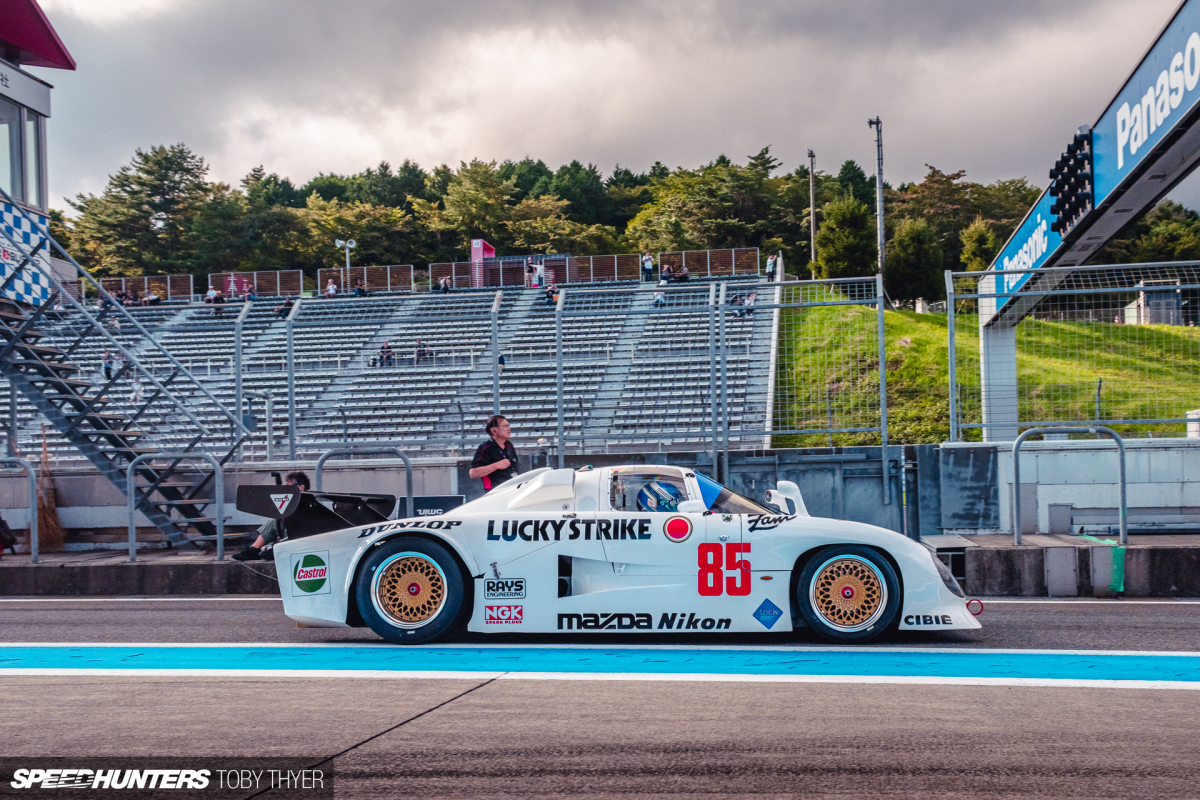
The 737 also has interesting provenance as it was the first car built entirely by Mazdaspeed themselves, unlike the previous cars which had been built by Mooncraft in Shizuoka.
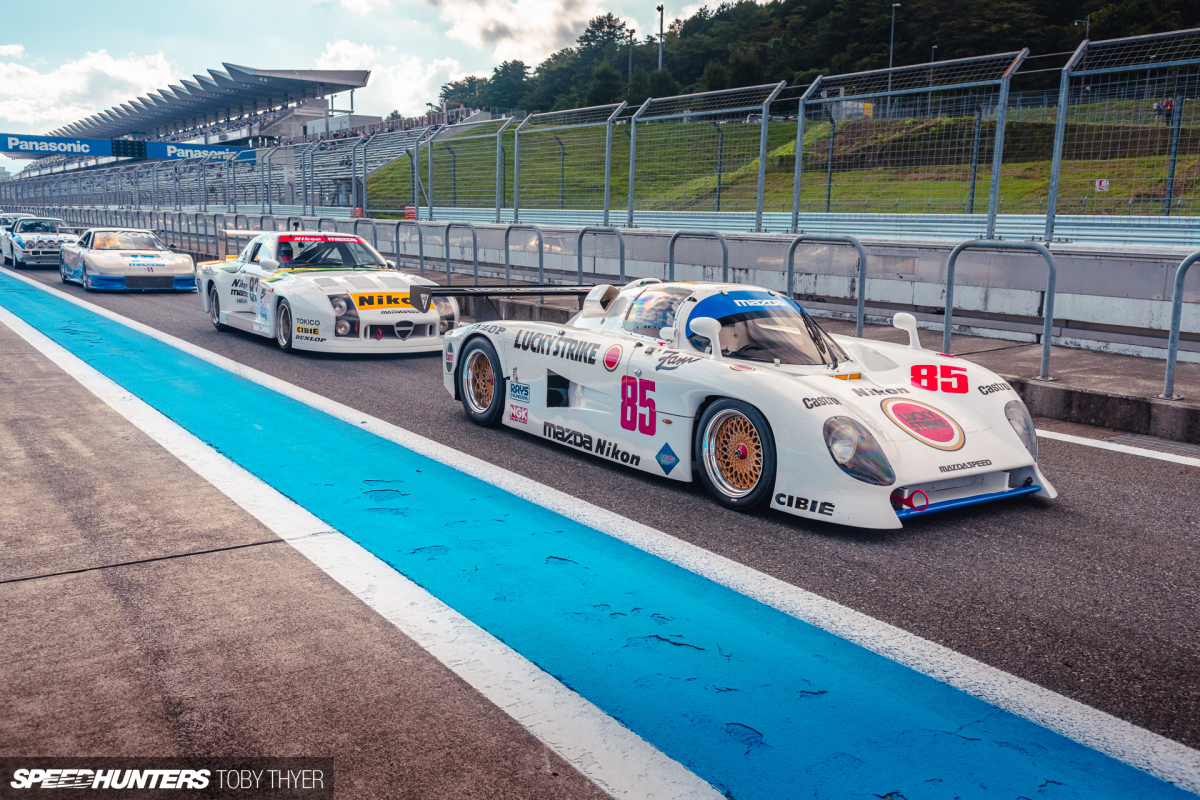
When the 737 retired from endurance racing it fell into the hands of privateers, who ran it in the All Japan Sports Prototype Championship. It then sat in storage for many years, before finally being restored by MZ Racing, who recreated missing parts and decals from old photos.
By the time the 757 car – designed by Nigel Stroud – came along, it was clear that a rotary-shaped storm was brewing. That car introduced a new three-rotor 13G engine, and then the 767 and 767B brought the four-rotor 13J. Those engines paved the way for the legendary four-rotor R26B in the 787B.
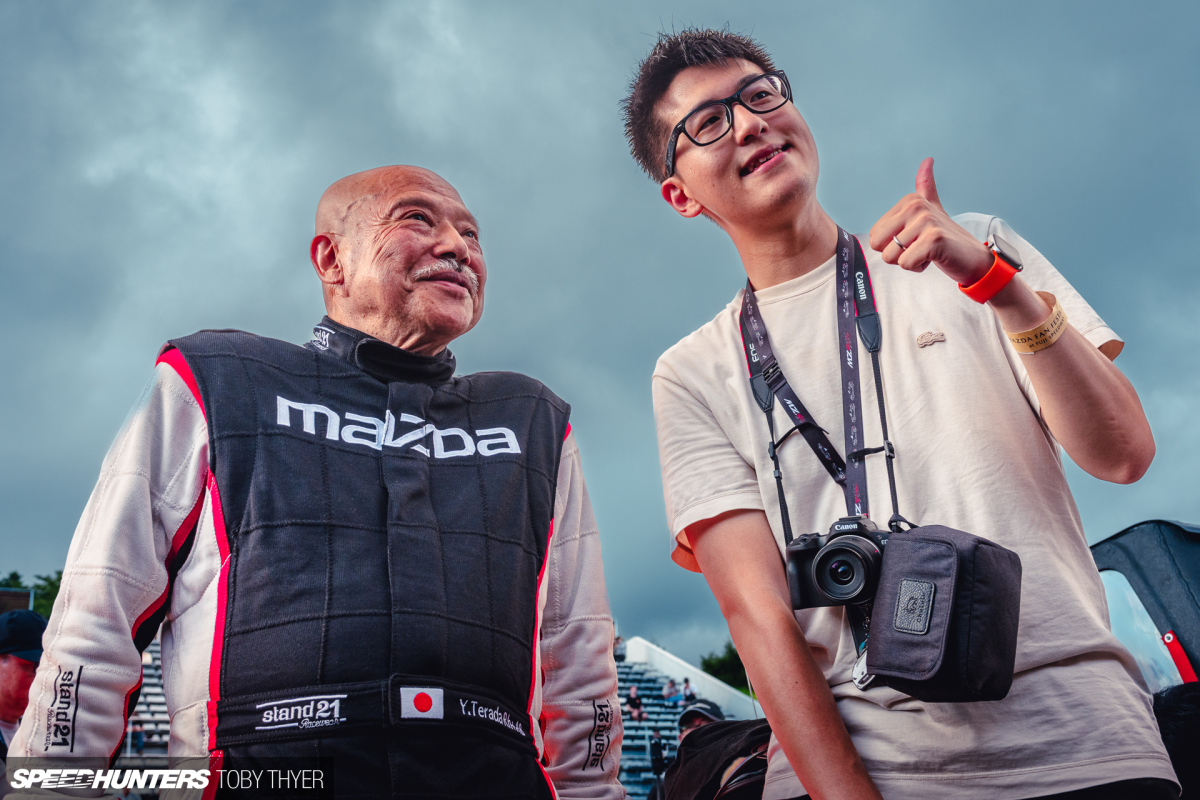
I’m not sure if the 787B or Yojiro Terada – better known as Mr. Le Mans – attracted the bigger crowd at the Fan Festa. Terada-san entered the race a record 29 times, with four class victories and a best overall finish of 7th. He raced for Mazdaspeed all through the 1980s and into the ’90s, and even drove a 787 to finish 8th overall in 1991 behind the 1st and 5th placing 787Bs.
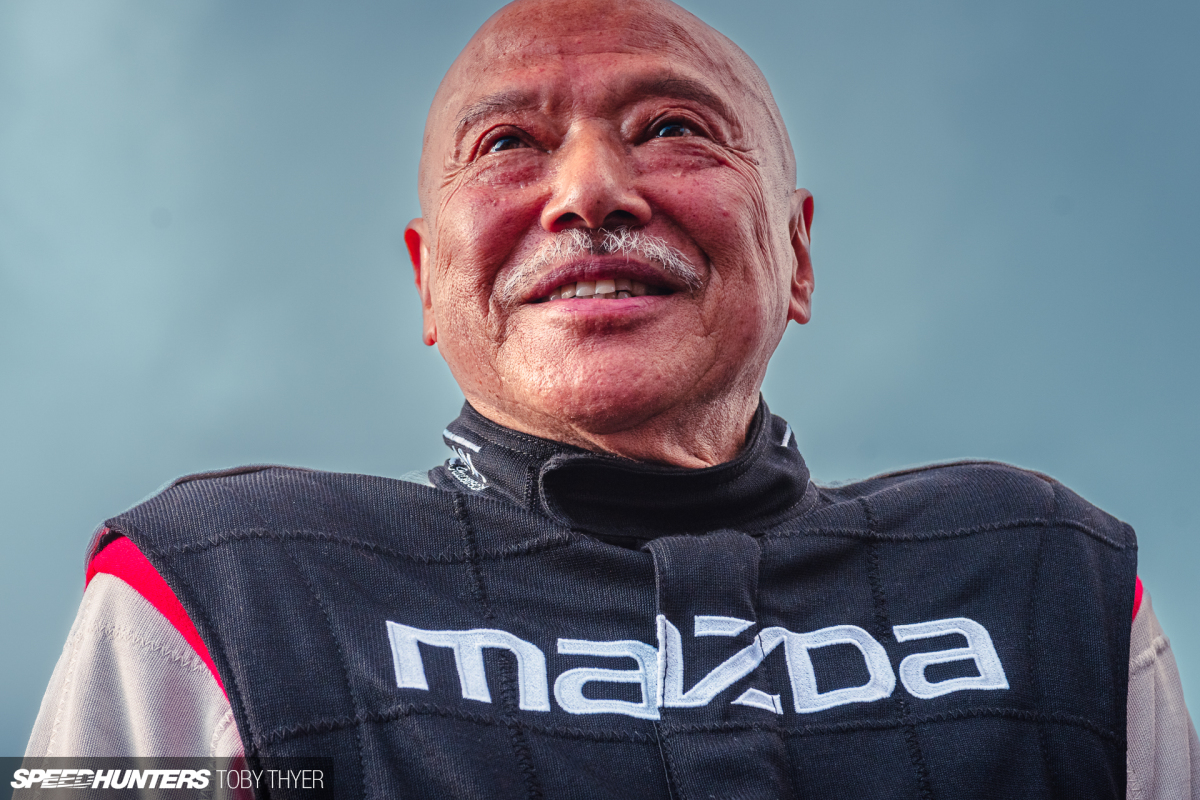
It was an honour to shoot Terada-san’s portrait and battle the crowds that swarmed him for an autograph.
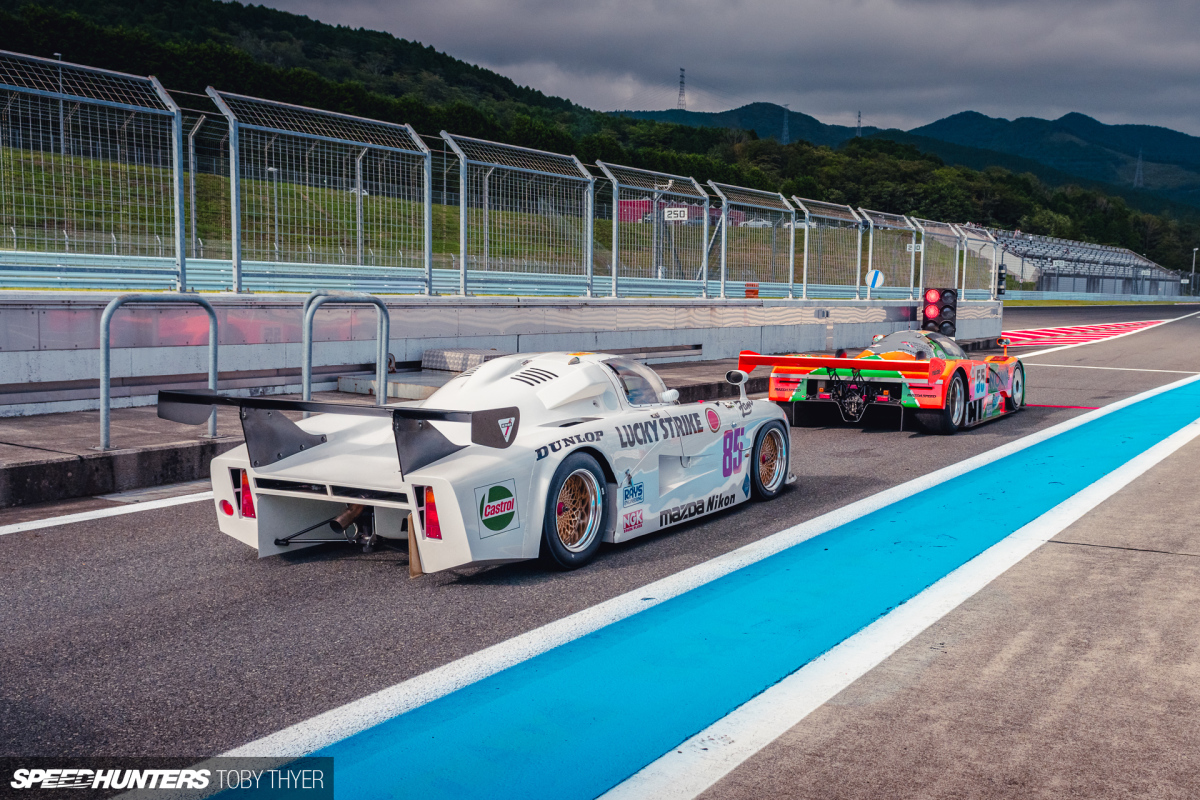
Watching these Mazda rotary legends of Le Mans do laps of Fuji Speedway was a real treat, and it’s about as close to having a time machine as I’ll ever get. We’ll likely never see another rotary-powered car entering Le Mans, even though they could. After regulations prevented rotary engines from being used from 1992, in 2021 the governing bodies entered a few lines in the rule book which applied to rotary engines, effectively giving the Wankel permission to race again.
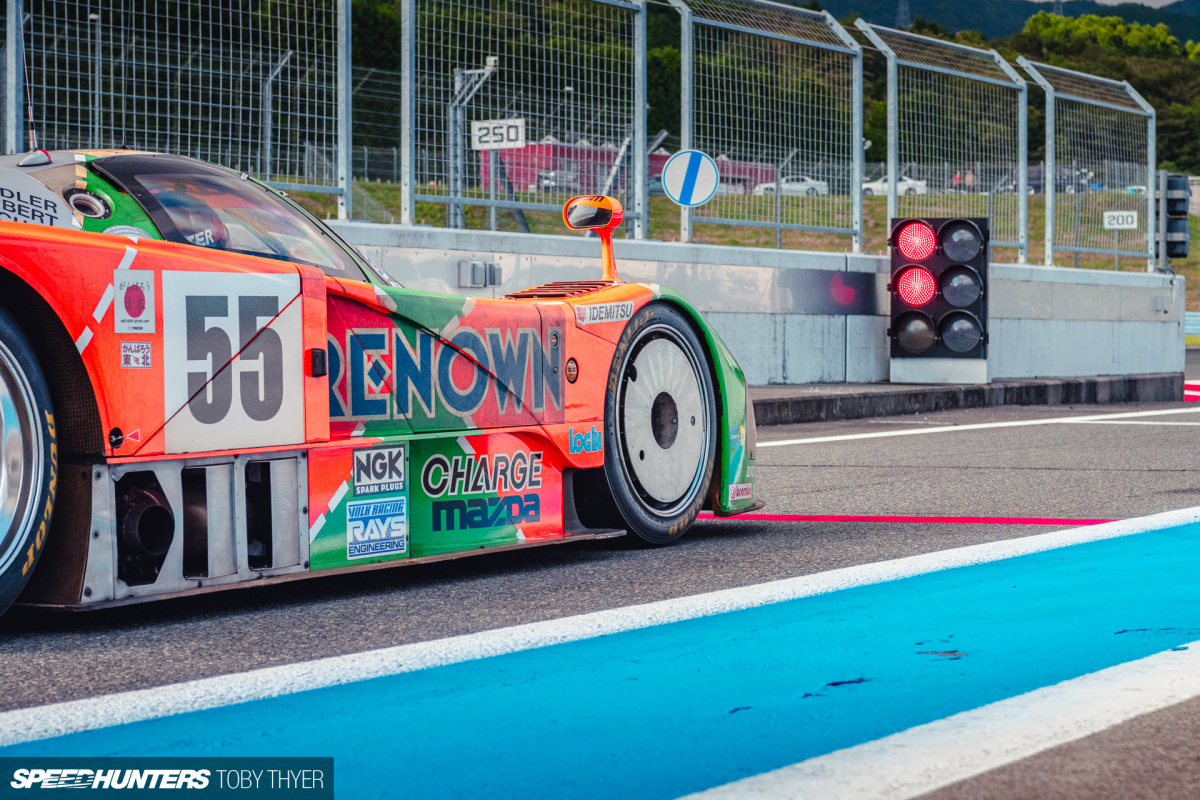
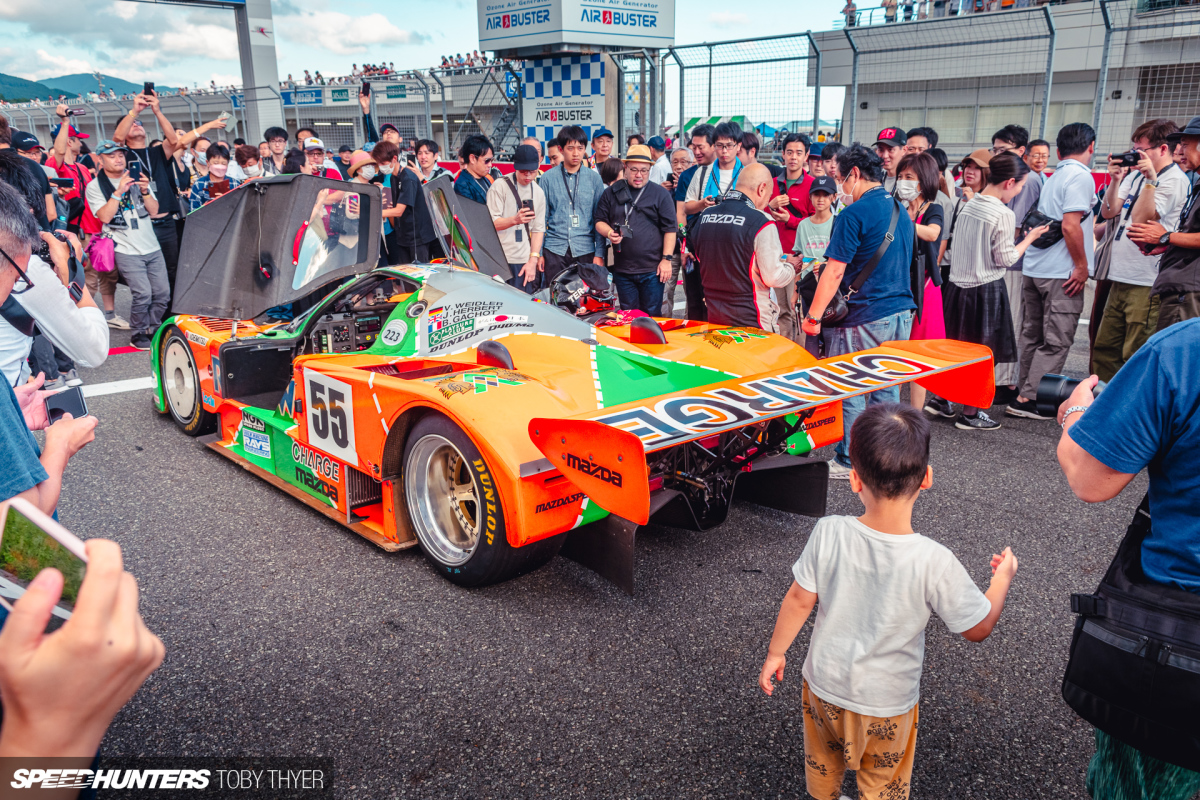
Seeing a rotary in a Le Mans car is perhaps not as impossible as you might first think. In 2021 – the same year those entry rules changed – Mazda resurrected the rotary as a range extender for their EV cars. Just imagine a hybrid Mazda LMH or LMDh car entering the grid…
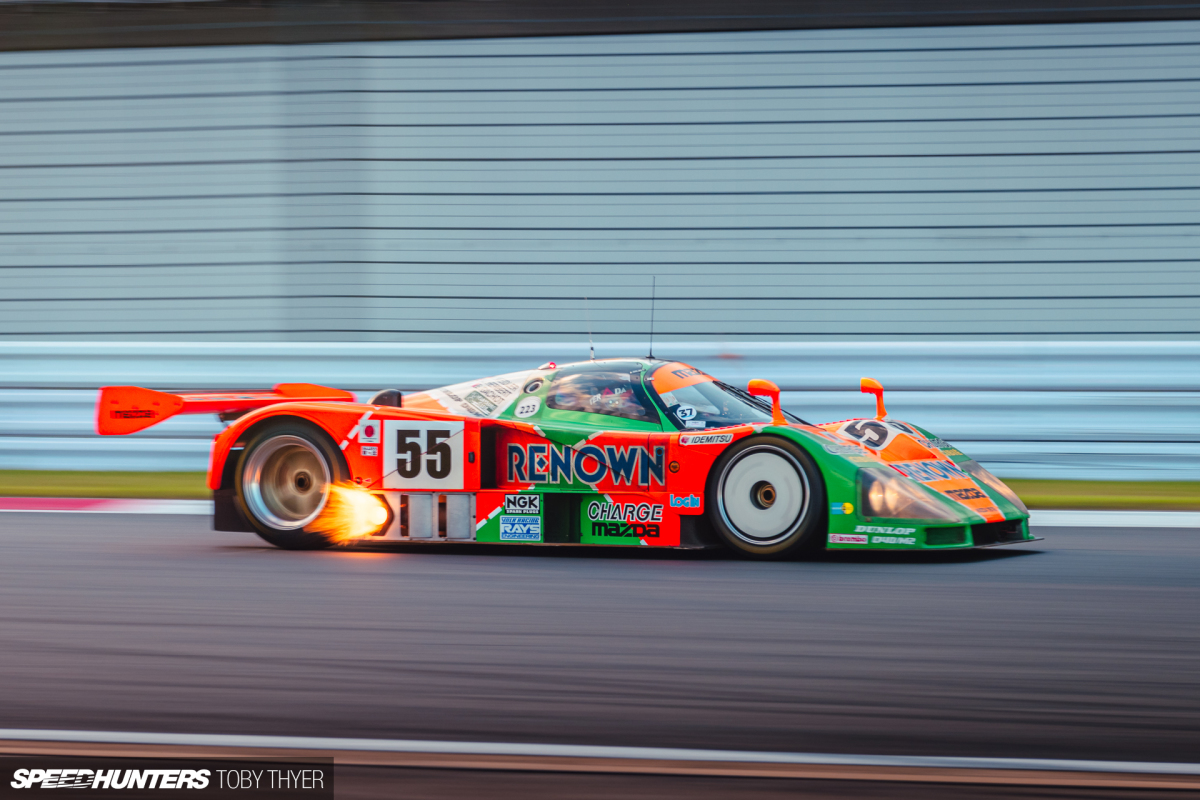
No one can see into the future, but who knows, we might see a second rotary win at Le Mans in the next 100 years.
Toby Thyer
Instagram _tobinsta_
tobythyer.co.uk

